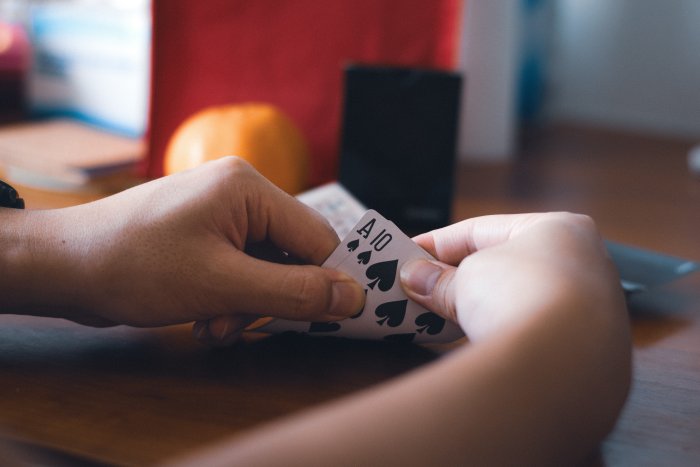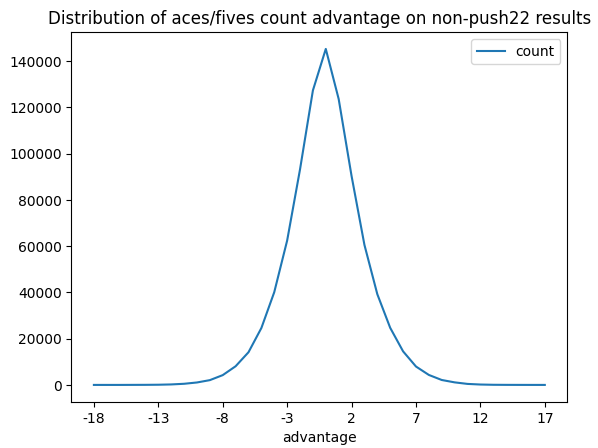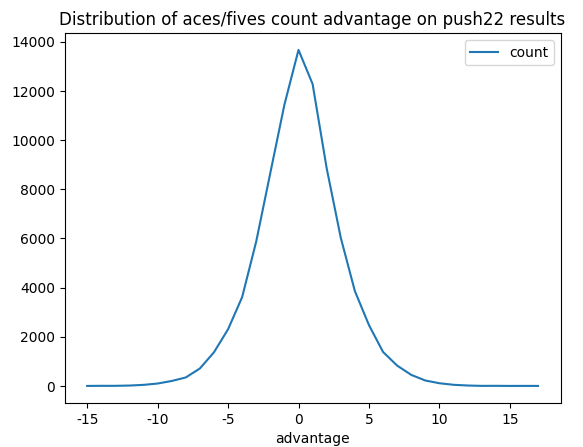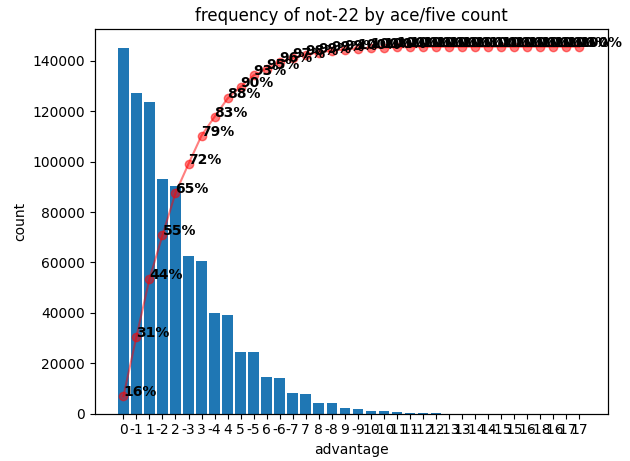Background
Free Bet Blackjack is a variant on traditional blackjack where players get to split or double for free, and where the dealer pushes on 22 (instead of losing). Thanks to Michael Shackleford, the world's foremost gambling expert and educator, a simple strategy for this game is available.
In some casinos, a Push-22 side bet is available. This side bet has the following pay table:
- Dealer gets 22 with all the same suit (e.g. hearts): 50x
- Dealer gets 22 with the same color, but different suits (e.g. mix of hearts and diamonds): 20x
- Dealer gets 22 with a mix of red and black cards: 7x
- Dealer gets anything other than 22: side bet is lost
While side bets usually offer bad value for the player, they can add excitement to a gaming session. So in this article, we're looking at ways to make this Push-22 side bet slightly less devastating financially so we can play longer.
Before moving forward, a kind reminder:
Regardless of skills, luck or bankroll, the casino always has an edge over the players; the games themselves are designed that way. Gambling is therefore a form of entertainment rather than a money-making activity.
Caveat emptor
Anyone telling you that they have a system to always make money at the casino is either a charlatan or a crook. The longer you play, the more likely you are to experience a catastrophic loss. For more information about betting systems, see this page on The Wizard of Odds website.

Hypothesis: card counting can help
Properly counting cards at blackjack is hard, and few players have the time or energy to learn this skill. There is, however, a simplified way of counting cards described by Michael Shackleford on his website. It boils down to tracking the count of Aces and Fives, and to adjust the main bet accordingly.
Our hypothesis is that tracking this count of Aces and Fives can somehow help determine when it's a good time to play the Push-22 side bet.
Using a simulation
Anecdotal evidence is not a good basis for a gambling strategy. Therefore, we decided to make a simulation and to analyze results using Python and Jupyter.
For our proof of concept, we started with the following parameters:
- Number of simulations: 1,000,000
- Number of players: 1 (plus dealer)
- Number of decks: 8
- Maximum deck penetration: 85%
- Dealer hit soft 17
- Simulation rules as described on The Wizard of Odds website
We plan on evaluating additional scenarios later.
Preliminary results: distribution of Aces/Fives count
For hands that do no conclude in a Push-22, we can see that the distribution of the Aces/Fives count is somewhat normal, heavily centered on 0 (neither more Aces of more Fives seen).
This is expected, as long sequences of +1/-1 will tend to cancel out.

We can see that the frequency of Push-22 follows more or less the same distribution.
This is also expected.

Preliminary results: focus w/ a Pareto chart
For non-Push 22, we can see that roughly 2/3 of rounds conclude while the count is between -2 and +2.

For Push 22, we have more or less the same observation.

Preliminary results: the plot thickens
When we compare the proportion of Aces/Fives count between the Push-22 and normal hands, however, we can see a more skewed result on slightly lower count. The sweet spot appears to be -2 (when two more Aces than Fives have been observed).
Although anecdotal evidence is not scientific, this result seems in line with what we've seen during long sessions of playing Free Bet Blackjack.
Therefore, our new hypothesis is that a count from -2 to +2 may be beneficial to Push-22 side bet players, with a sweet spot at -2.
Caution: these are preliminary results that do not account for all factors, and it is therefore not advisable to rely on these numbers when playing with real money.

Next steps
We plan on including more factors in our analysis:
- Multiple players with variable skill sets
- Impact on bankroll and overall win/loss
- Impact of remaining in the same count for multiple rounds (i.e. does the Push-22 hit more often when the count has been the same for many hands)
We also plan on releasing a video showing how we built this solution in Python. To be continued!
Before concluding, our kind reminder again:
Regardless of skills, luck or bankroll, the casino always has an edge over the players; the games themselves are designed that way. Gambling is therefore a form of entertainment rather than a money-making activity.